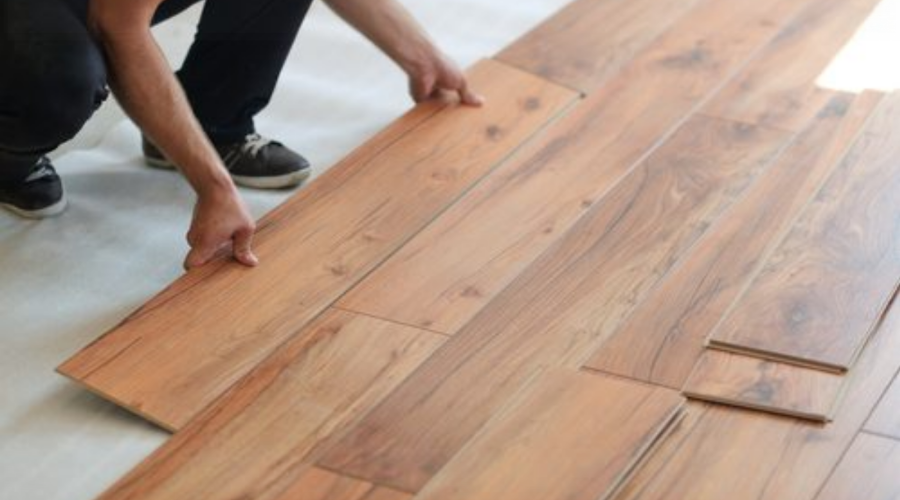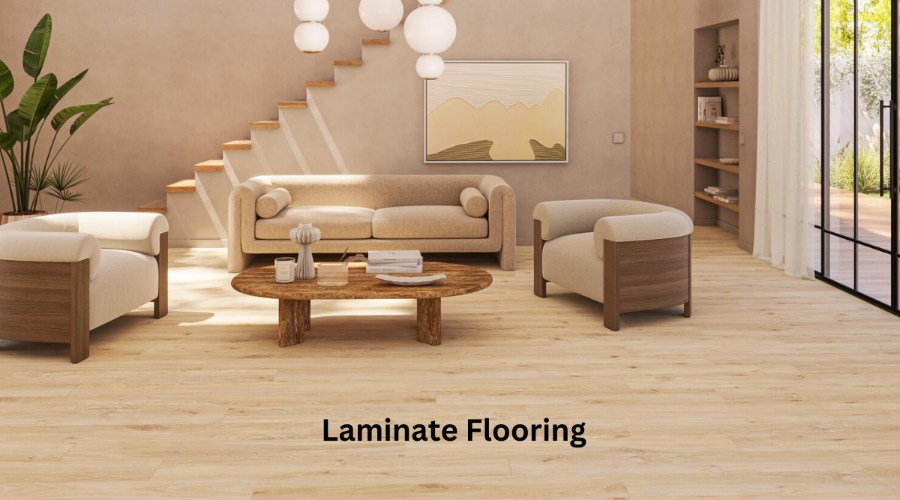Selection of the right flooring is a typical part of construction. It may be a house or office space; flooring influences the overall look and appearance. The suggestion of individuals differs from one another; you need to ensure whether it suits your infrastructure and needs.
In this blog, we’ll discuss the differences between vinyl wood flooring and laminate flooring and which is best to install. While both flooring options are best, understanding their differences can help you choose the appropriate one for your requirements.
Let’s delve into the topic now:
What is Vinyl Wood Flooring?

Vinyl flooring is valued for its mimicking natural look and is made from synthetic materials, particularly PVC (polyvinyl chloride). It fairly replicates various natural flooring styles such as wood, stone, etc. Unlike other flooring options, vinyl is a product composed of various materials sandwiched together. It is extremely durable, affordable, and also a practical flooring option.
What is Laminate Flooring?

Laminate flooring is a multi-layer synthetic flooring that resembles the appearance of wood or stone. The layers are fused together using a lamination process with high heat and pressure. Being a popular flooring option, it is easy to install and provides enhanced performance. It consists of four different layers for distinct purposes such as durability, appearance, quality, and feel of real wood.
Pros and Cons of Vinyl Wood Flooring
Pros
Vinyl wood flooring is a feasible choice for homeowners, providing enhanced aesthetic appeal, durability, and cost-effectiveness. However, every choice of flooring has its unique set of pros and cons. Here’s a clear view:
Water-Resistance: Unlike other man-made substances, vinyl flooring offers extreme water resistance, perfect for installing in areas with high moisture content. They include basements, bathrooms, and kitchens.
Reliable: Whether it is a home or office space if it is subjected to high traffic, this vinyl flooring is the best choice. It is highly resistant to wear, scratches, and stains and is suitable for homes with children and pets.
Easy To Maintain: Vinyl floors require minimal r maintenance and they are generally easy to clean. They only need regular sweeping and occasional mopping. Following the general care tips will enhance the durability and aesthetic appeal.
Various Styles: Vinyl wood flooring is available in several styles and colours; you are free to explore and choose the appropriate one that fits your needs and architecture. Surprisingly, some styles replicate the look of natural wood, tile, or stone.
Cons
Let’s discuss some notable disadvantages of vinyl flooring:
Reduced Resale Value: Resale value is a major concern of any home or building. Unfortunately, the installation of vinyl flooring will not give much value to your home when you decide to sell.
Susceptible to Damage: Since the flooring is highly durable, it may be subject to damage from heavy furniture or sharp objects. Even a small dent can influence the whole look of the space, and you need to repair it immediately to avoid further damage.
No Luxurious Effect: You might have a dream to make your space extraordinary or luxurious. If this is the case, vinyl flooring is not your choice. It may mimic the look of natural materials like real stone or hardwood, but it does not provide the same texture and luxurious feel
Pros and Cons of Laminate Flooring
Since laminate flooring is highly used, understanding its significant advantages and disadvantages helps you well. Read to know more:
Pros
Easy Installation: Laminate flooring is pretty easy to install and can be cut with a saw effortlessly. It is feasible to fit around obstacles and in tight spaces. If you are looking to complete the project by a tight deadline, give this flooring option a try.
Stain Resistance: Unlike other flooring types, it is highly resistant to regular household stains like food, spills, and pet accidents. It means that you don’t need to put much effort into maintaining its actual look and appearance.
Versatile: Laminate flooring is an extremely versatile option that can fit into any room space, including kitchens, hallways, and living rooms. Based on the area of usage, you can choose the material and style accordingly.
Cons
Damaged by Excessive Moisture: Laminate flooring is not as water-resistant as vinyl, the excessive moisture content may influence the core of the laminate, causing warp and swell. If you are thinking of installing in moisture areas, consider vinyl or tile as your prior choice.
Repair is Hard: Repairing or refinishing is very hard in laminate flooring. Once the wear layer is susceptible to damage, it needs immediate replacement to safeguard the look.
Limited Texture: The feel and look of real materials are greatly varied from man-made substances. It can be a big drawback for some homeowners as they can’t desire the expected texture and feel.
Comparison of vinyl wood flooring and laminate flooring
This table breaks down the important parameters of vinyl wood flooring and laminate flooring; understanding their differences can help you make a wise decision for your house.
| Parameters | Vinyl Wood Flooring | Laminate Flooring |
| Materials | Vinyl flooring is entirely a synthetic material made from polyvinyl chloride for wood flooring. | Laminate flooring is composed of several laminated layers including a wood fiberwood core. |
| Appearance | This flooring mimics the exact look of natural wood, tile or stone. | It realistically replicates the appearance of original wood, stone, or tile. |
| Water Resistance | Vinyl flooring is extremely water-resistant, and suitable to install in areas like kitchens, bathrooms and other spaces prone to moisture content. | Not as water-resistant as vinyl flooring, when exposed to excessive moisture content, it is subjected to swell and warp. |
| Lifespan | When you are following the manufacturer’s advice, it can last for 10 to 20 years. | With proper care and maintenance, it can last for 10 to 25 years. |
| Maintenance | Vinyl flooring is easy to clean and requires minimal maintenance and care. | It is also easy to clean and doesn’t require regular maintenance. |
| Cost | It is economical yet the price range can vary due to the quality and style. | Laminate flooring is cost-effective yet it varies due to the style and quality you prefer. |
Final Thoughts
Understanding the significant differences between vinyl and laminate flooring allows you to make informed decisions. Both are excellent choices for homes, yet you need to consider the durability, maintenance, cost, and risk associated with installation. It is advisable to keep your perspective in the future to come up with the best decision.

